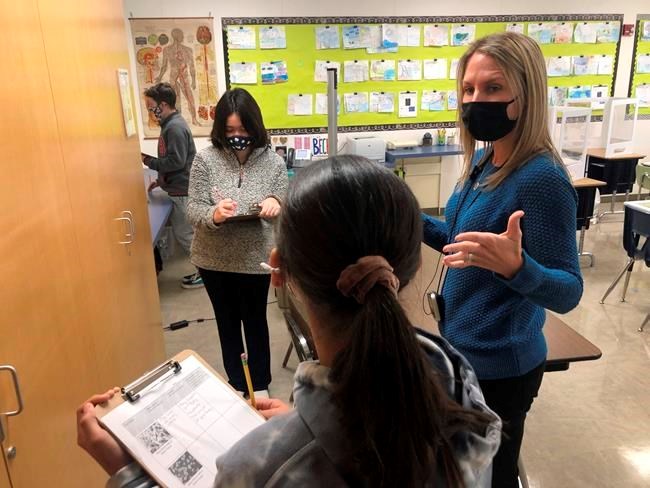SACRAMENTO, Calif. — California lawmakers on Thursday approved a $6.6 billion plan aimed at pressuring school districts to return students to the classroom before the end of the school year.
The bill does not order school districts to resume in-person instruction and it does not say parents must send their kids back to the classroom if they don’t want to.
Instead, the state will dangle $2 billion before cash-strapped school boards, offering them a share of that money only if they offer in-person instruction by the end of the month.
School districts have until May 15 to decide. Districts that resume in-person learning after that date won’t get any of that money.
“We need to get the schools reopen. And I know it’s hard, but today we are providing powerful tools for schools to move in this direction,” said state Sen. Scott Wiener, a Democrat from San Francisco who pleaded with his school district to accept the money and offer in-person instruction.
Most of California's 6.1 million students throughout 1,037 public school districts have been learning from home since last March because of the pandemic. Frustrated parents and politicians have been
But many school boards have been reluctant, facing opposition from teachers unions worried about coronavirus safety protocols and citing surveys from parents saying they are not comfortable sending their kids back to class in-person.
“As a former math teacher for 13 years, we know that that’s the place we need our kids to be, but we’re afraid because you’re asking to put our own lives at risk and to put our families' lives at risk,” said Assemblywoman Cristina Garcia, a Democrat from Bell Gardens in Los Angeles County.
Nearly every lawmaker voted for the bill on Thursday, but many did so reluctantly, arguing it's too weak.
The bill does not say how much time students should spend in the classroom, prompting fears some districts might have students return for just one day a week and still be eligible to get the money. And while the bill requires most elementary school grades to return to the classroom to get the money, it does not require all middle and high school grades to return this year.
Republicans in the state Senate tried to amend the bill to say schools must offer at least three days per week of in-person learning, but Democrats in the majority rejected it.
Gov. Gavin Newsom, a Democrat, has said he plans to sign the bill into law on Friday. Newsom faces a potential recall election later this year, fueled by anger over his handling of the fallout from the pandemic. He has
Scott Wilk, the Republican leader in the state Senate, said the bill was simply an effort by Democrats to give Newsom political cover so he can “get parents to believe he’s doing everything he possibly can for them.”
“The truth is (this bill) doesn’t do anything to reopen our schools. ,” said Wilk, who voted for the bill along with most other Republicans.
The bill has two sets of rules districts must follow to get the money. The first set applies to school districts in counties where the coronavirus is widespread. The second set of rules applies to districts in counties where the virus is not as widespread.
To get the money, districts governed by the first set of rules must offer in-person learning through at least second grade by the end of March. Districts governed by the second set of rules must offer in-person learning to all elementary grades, plus at least one grade in middle and high school.
However, the Newsom administration late Wednesday changed the standards that dictate which counties must follow which rules. The new standards mean most counties will have to follow the second set of rules requiring districts to offer in-person instruction for more grades.
Democratic Assemblywoman Lorena Gonzalez criticized that decision as “a little dishonest.” Jeff Freitas, president of the California Federation of Teachers, went further, saying he was “deeply concerned to see the goalposts already moving on this reopening plan just days after its unveiling.”
“This change risks the unintended consequences of delaying return to classrooms and further eroding Californians' trust,” he said.
The bill also includes $4.6 billion aimed at helping students catch up after a year of learning from home. Districts could use the money to extend the school year into the summer or they could spend it on
All districts would get this money, regardless of whether they offer in-person instruction. But the bill stated that districts must use at least 85% of that money for expenses related to in-person instruction.
Adam Beam, The Associated Press




